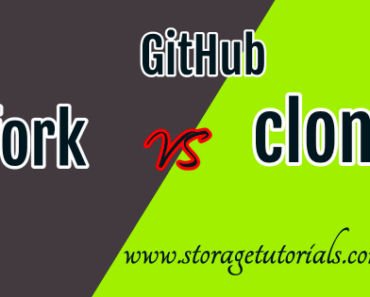In the dynamic realm of log management, two powerful tools often find themselves in the spotlight – Filebeat and Logstash. As businesses strive to efficiently handle and analyze logs, the choice between these two becomes crucial.
In this article on “Filebeat vs Logstash“, we will go through the general overview of Filebeat and Logstash, explore why they are important in the world of log management, and dissect the key distinctions between them.
Table of Contents
In my opinion, the landscape of log management tools has evolved significantly, and two standout players in this domain are Filebeat and Logstash. Our experience in the field has shown that making an informed decision between these two tools is essential for optimizing log processing and analysis.
Understanding Filebeat and Logstash
Filebeat and Logstash are both widely used tools designed to handle the collection, processing, and forwarding of log data. In my opinion, their significance lies in their ability to streamline the complex task of managing logs efficiently.
What is Filebeat?
Filebeat, developed by Elastic, serves as a lightweight shipper for forwarding log data to Elasticsearch or Logstash. It excels in simplicity and speed, making it an ideal choice for scenarios where resource efficiency is a priority.
Our experience indicates that Filebeat is particularly suitable for forwarding log data from various sources to central repositories.
What is Logstash?
On the other hand, Logstash is a robust log processing tool that plays a pivotal role in the ELK (Elasticsearch, Logstash, Kibana) stack. Logstash excels in parsing, filtering, and enriching log events before forwarding them to Elasticsearch.
In my opinion, Logstash’s strength lies in its versatility and extensive plugin ecosystem, allowing users to tailor their log processing workflows.
Why Filebeat and Logstash Matter
The importance of Filebeat and Logstash in log management cannot be overstated. Efficient log management is crucial for troubleshooting, monitoring, and gaining valuable insights into system performance.
These tools play a pivotal role in ensuring that log data is collected, processed, and analyzed in a seamless and organized manner.
Distinguishing Filebeat vs Logstash
Now, let’s dive into the key differences between Filebeat and Logstash.
One of the notable distinctions is in their data collection and complexity. While Filebeat focuses on lightweight log forwarding, Logstash provides a comprehensive data processing pipeline. This makes Filebeat more suitable for scenarios where simplicity and speed are paramount, while Logstash excels in situations requiring complex data transformations.
You May Like: Key Differences Between XFS and EXT4
In my opinion, another crucial difference lies in resource utilization. Filebeat, being lightweight, consumes fewer resources compared to Logstash. Our experience suggests that this makes Filebeat a preferred choice in resource-constrained environments, where efficiency is a top priority.
Filebeat boasts a user-friendly design, making it easy to set up and configure. Its simplicity is a significant advantage for users looking for a plug-and-play log shipping solution. Logstash, though more complex, offers unparalleled configuration options, allowing users to tailor log processing to their unique requirements.
Filebeat finds its niche in scenarios where lightweight log shipping is crucial, such as in microservices architectures. On the other hand, Logstash is well-suited for environments requiring intricate log processing, data transformation, and enrichment.
Table: Differences Between Filebeat and Logstash (Filebeat vs Logstash)
| Feature | Filebeat | Logstash |
|---|---|---|
| Data Collection | Lightweight log shipping | Robust log processing |
| Resource Consumption | Minimal | Higher resource usage |
| Flexibility | Limited customization | Extensive configuration options |
| Use Cases | Lightweight log shipping, microservices | Complex log processing, data enrichment |
| Integration Possibilities | Seamless integration with Logstash | Part of the ELK stack |
Conclusion
In conclusion, choosing between Filebeat and Logstash depends on the specific requirements of your log management strategy. In my opinion, Filebeat is the go-to option for streamlined log forwarding, especially in resource-constrained environments. On the other hand, Logstash’s versatility and powerful data processing capabilities make it a compelling choice for more complex log management workflows.
Carefully weighing these factors based on your specific needs will lead to a well-informed decision between Filebeat and Logstash for your log management endeavors.
FAQs
- Can Filebeat and Logstash be used together?
- Yes, Filebeat and Logstash can be integrated to create a comprehensive log management pipeline.
- What are the resource considerations when choosing between Filebeat and Logstash?
- Filebeat is lightweight and consumes minimal resources, whereas Logstash may require more resources due to its extensive log processing capabilities.
- Are there security features in both Filebeat and Logstash?
- Yes, both Filebeat and Logstash offer encryption options and authentication mechanisms to secure log transmissions.
- In what scenarios is Filebeat more suitable?
- Filebeat is ideal for scenarios where lightweight log shipping is crucial, such as in microservices architectures.
- What is the future outlook for Filebeat and Logstash?
- Both tools continue to evolve, with ongoing updates and enhancements driven by community contributions.



![[How To] Git Cherry Pick with Example Git-Cherry-Pick-command-tutorial](https://www.storagetutorials.com/storage/2023/02/xGit-Cherry-Pick-command-tutorial-370x297.jpg.pagespeed.ic.PuLqzKUj3a.jpg)
